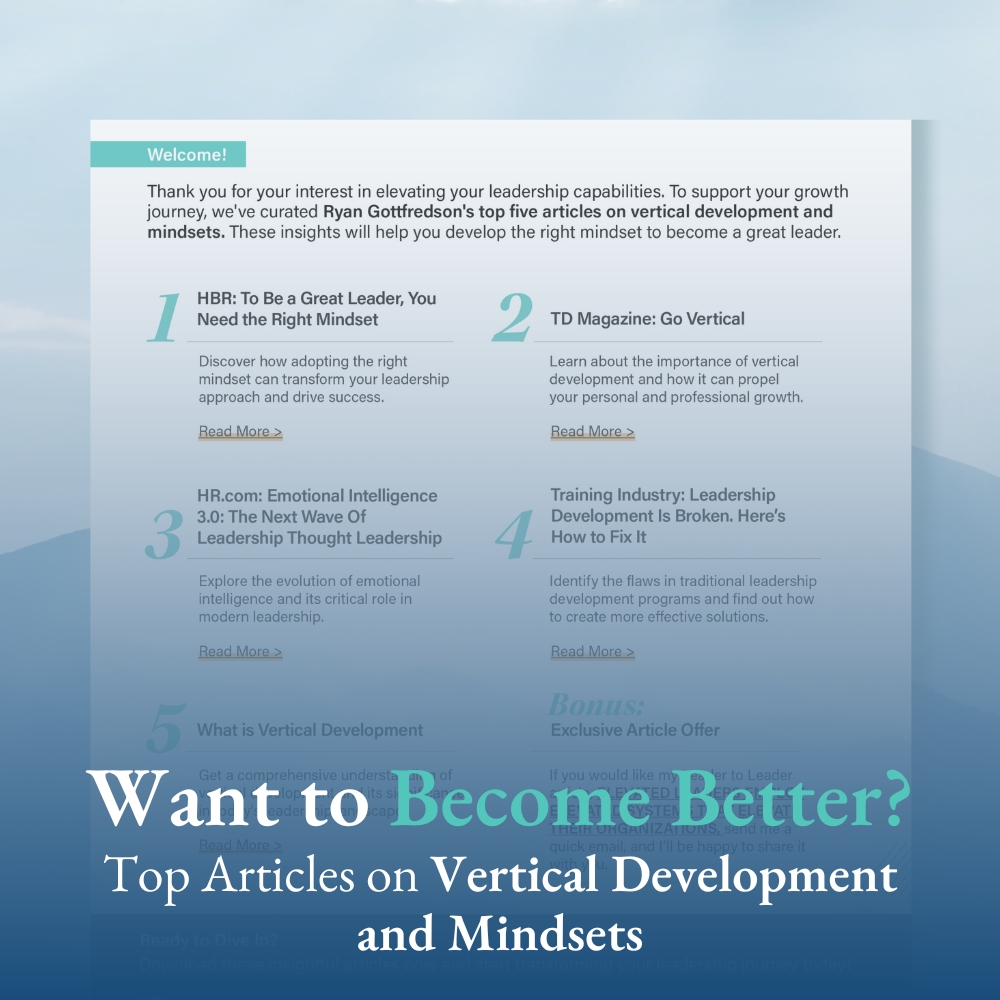In today’s rapidly changing and increasingly complex world, effective leadership is more critical than ever. Yet, startling data from PWC reveals that 85% of leaders operate at a moderate level of sophistication in their leadership—what we can classify as Mind 2.0. While these leaders are valuable and competent in many ways, most organizations are unknowingly settling for mediocre leadership. This stagnation presents a massive missed opportunity for transformation, growth, and innovation.
Understanding the nuances of vertical development and leadership sophistication is essential for any organization looking to elevate its leadership capabilities. Let’s explore what these levels of leadership look like, why the current state is problematic, and how we can move forward.
The Three Levels of Leadership Mindsets
Leveraging the PWC report (and related research), I categorize leaders into three distinct vertical development altitudes: Mind 1.0, Mind 2.0, and Mind 3.0. Each mind level represents a different level of sophistication in how leaders think, behave, and approach their roles:
- Mind 1.0 Leaders: These leaders genuinely want to do good work, but they often struggle to take initiative. Their approach to leadership tends to be reactive, and they rely heavily on others to guide their actions. While well-intentioned, their limited self-efficacy often makes them ineffective in dynamic or complex environments. 7% of leaders operate at this level.
- Mind 2.0 Leaders: The majority of leaders (85%) operate at this level. These leaders are more proactive, taking initiative and driving results. However, their focus is typically on short-term outcomes and immediate successes. While they can deliver value in the present, they often lack the capacity to navigate ambiguity or think strategically about long-term challenges and opportunities. They are often hard-chargers who struggle to create an environment where their employees thrive over a long period of time.
- Mind 3.0 Leaders: At the highest level of vertical development, leaders focus on fulfilling a long-term purpose and creating massive value for others. These leaders prioritize transformation over transaction and approach their roles with a deep commitment to growth, innovation, and impact. Mind 3.0 leaders are adept at addressing complexity and fostering lasting change.
Why Most Organizations Are Settling for Mediocre Leadership
The predominance of Mind 2.0 leadership means that most organizations are prioritizing short-term performance over long-term success. This is not necessarily intentional—many organizations simply lack awareness of vertical development or fail to recognize its importance in leadership development strategies.
In fact, research from the BrandonHall Group reveals a troubling gap in leadership development efforts:
- 75% of organizations rated their leadership development programs as not very effective.
- 71% of organizations did not feel their leaders were able to lead their organization into the future.
These insights suggest that while organizations invest heavily in leadership development, they may be focusing on horizontal development—adding new skills and competencies—rather than vertical development, which is about expanding leaders’ capacity to think and operate at a higher level.
The Opportunity to Elevate Leadership
Organizations must recognize that developing Mind 3.0 leaders is not an unattainable goal. While it requires intentional effort, the payoff is substantial:
- Navigating Complexity: Mind 3.0 leaders are uniquely equipped to address the complexities of today’s challenges, making them invaluable in driving innovation and transformation.
- Fostering a Purpose-Driven Culture: These leaders inspire others by focusing on creating value for the organization and its stakeholders, leading to higher engagement and alignment.
- Driving Sustainable Growth: Long-term success requires leaders who can think strategically and prioritize initiatives that create lasting impact, rather than chasing short-term wins.
You Don’t Need to Be an Expert to Start
One of the most common misconceptions about vertical development is that it’s overly complex or difficult to implement. While the concept is nuanced, organizations don’t need to master every aspect of vertical development to start making meaningful changes.
By partnering with experts who understand vertical development, organizations can begin to reassess their leadership development strategies and identify practical steps to elevate their leaders. For example, focusing on experiential learning opportunities, fostering growth-oriented mindsets, and creating environments that challenge leaders to operate at higher altitudes are all achievable starting points.
A Call to Action
The 85% of leaders operating at Mind 2.0 represent untapped potential for your organization. Elevating them to Mind 3.0 is not just a worthy goal; it is a necessity for organizations seeking to thrive in a complex and ever-changing world.
If you are ready to take the next step in evolving your leadership development strategy, let’s connect. I specialize in helping organizations like yours embrace vertical development and create strategies that empower leaders to operate at their highest potential. Together, we can turn your leadership programs into catalysts for lasting transformation and success.
Don’t settle for mediocrity. Let’s elevate your leaders and your organization to new heights.










